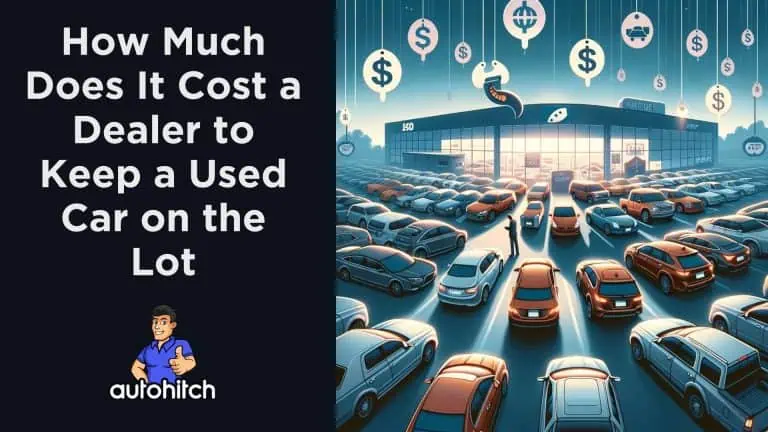When you’re negotiating the purchase of a used car, it’s important to know how much the dealer paid for that car and how much it costs the dealer to keep that car on the lot.
Why? Because when you know how much the dealer stands to profit on the car and how much they will lose by not selling you the car, you can gain leverage in the negotiation.
As a former dealer, my biggest advantage during a sale was a buyer who had no idea what my profit margin was going to be. This allowed me to make the common claim that I was selling the car at cost, which is typical dealer mumbo jumbo.
Below are the main categories of what goes into the dealer’s cost of keeping a used car on the lot.
Related Articles to Read:
- How Much Will Dealers Come Down on a Used Car?
- How Much Cheaper Are Cars At Dealer Auctions
- How Much Are Dealer Fees and How to Avoid Them
- Out The Door Price
- How Long Does It Take To Buy A Car
Table of Contents
Reconditioning and Detail Fees
Before putting a used car on the sales lot, dealers invest in “reconditioning” it to ensure it’s retail-ready. This involves mechanical and cosmetic repairs, replacements, and finish work like buffing out scratches or touching up paint.
On average, dealers spend $1,500 reconditioning a used car, but it can run far higher depending on the vehicle’s age, brand, condition, and whether it’s a certified pre-owned model.
Additionally, dealers pay to have cars fully detailed before they go on sale, costing around $100 per unit.
Acquisition Fees
Many used vehicles come from wholesale auctions that charge dealers fees just to participate. These auction fees typically run approximately $400 per car.
Plus, dealers incur transportation fees to shuttle purchased vehicles from often distant auction sites back to their lots, which generally add another $200 per car.
Inventory Carrying Costs
For each vehicle occupying lot space waiting for sale, dealers face daily inventory carrying costs covering aspects like their floorplan loans, overhead, capital costs, and indirect expenses.
Domestic cars cost dealers roughly $40 per day to hold in inventory.
The carrying costs underscore the importance of efficient inventory management and turnover to protect profit margins.
Depreciation Impact
The big gorilla, however, is depreciation. Used cars can easily shed 20% of value in their first year and 40% over five years.
These drastic valuation drops not only slash potential resale pricing but also eat away at dealers’ bottom lines the longer vehicles remain unsold.
Toyota models are particularly known for strong resale values and lower depreciation versus domestic counterparts, making them more profitable used inventory.
Strategies to Trim Expenses
To help minimize inventory-related expenses, dealers employ various strategies:
- Accurately price cars based on real-time market demand data to attract buyers
- Streamline reconditioning to get cars retail-ready faster
- Carefully assess acquisition decisions to pick inventory that sells quickly
- Leverage expert appraisers to accurately forecast resale valuations
- List cars online to expand visibility and sales opportunities
Conclusion For Dealer Costs
The exact cost of keeping a specific used car on the lot varies widely depending on its acquisition price, reconditioning needs, brand, age, mileage, and other factors.
But broadly, dealers face significant inventory expenses that grow daily until vehicles ultimately sell. Understanding these key monetary motivators can better inform consumer negotiations.



